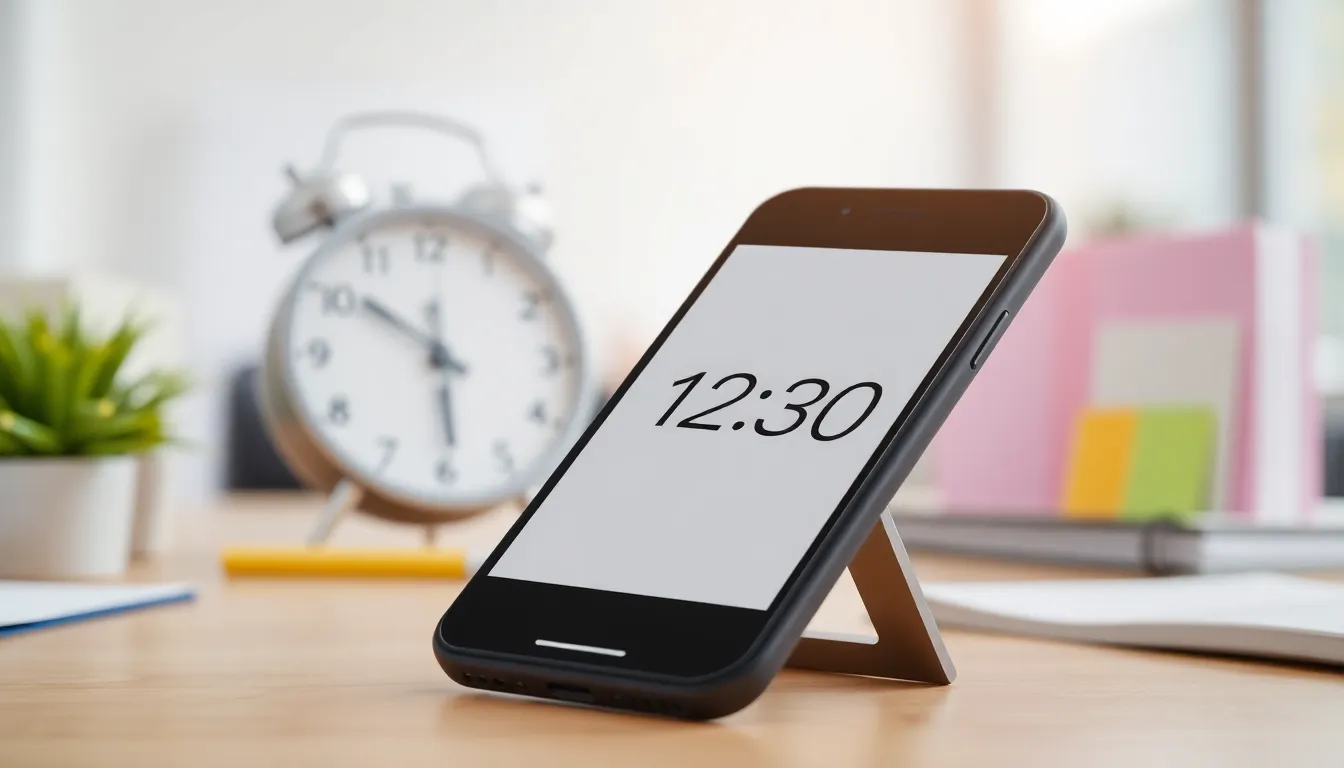Tick-tock, the clock’s ticking, and the anticipation for 12:30 is building! Whether it’s that much-awaited lunch break or the perfect time to catch up on a favorite show, knowing how much longer till 12:30 can feel like an eternity. It’s that sweet spot in the day when productivity meets indulgence, and who doesn’t want to know when they can finally savor that delicious meal or take a well-deserved breather?
Table of Contents
ToggleUnderstanding Time Concepts
Understanding time concepts helps individuals navigate their daily schedules effectively. The significance of time extends beyond the clock, influencing productivity and personal satisfaction.
The Importance of Time Management
Effective time management allows people to balance work and leisure. Prioritizing tasks reduces stress and enhances focus. Individuals benefit from setting deadlines for their responsibilities. Planning breaks, particularly around key times such as 12:30, rejuvenates energy levels. In example, scheduling lunch during this hour promotes healthier eating habits. Mastering time management skills leads to greater efficiency in achieving goals.
Time Zones and Their Effects
Time zones create variations in the perception of time across locations. Each zone represents a specific offset from Coordinated Universal Time (UTC). For instance, New York operates on UTC-5 during standard time. Such differences affect scheduling and communication, especially in global interactions. Recognizing these time variations helps individuals coordinate plans effectively. As an example, a 12:30 PM meeting in New York might occur at 9:30 AM in Los Angeles. Being aware of time zones enhances punctuality and productivity.
Calculating Time Until 12:30

Understanding the time remaining until 12:30 can enhance planning and anticipation throughout the day. Several straightforward methods exist for calculating this time.
Methods for Time Calculation
Using a clock provides immediate visibility. If it’s 11:45, simply subtract the current hour and minutes from 12:30, yielding 45 minutes until the desired time. Another method involves counting the minutes; start from the current time, and add until reaching 12:30. People can also use mental math for quicker estimations by rounding the current time up or down. For example, if it’s 12:15, it’s easy to recognize that 15 minutes remain. Facing various scenarios emphasizes the need for precise calculations, especially with tight schedules.
Tools and Apps for Accurate Timing
Numerous tools and apps exist to assist with time management. Clock apps on smartphones display countdown features, permitting easy tracking until 12:30. Calendar applications can send reminders, ensuring important moments aren’t missed. Online countdown timers provide visual aids, helping individuals stay focused on approaching deadlines. Additionally, productivity apps, like Todoist or Trello, allow users to organize tasks effectively around pivotal times. These tools significantly support maintaining awareness and enhancing daily scheduling.
Real-Life Scenarios
Understanding the significance of 12:30 helps in managing daily schedules effectively. This time often represents a break or a chance to relax, making it essential to track time accurately.
Daily Activities and Time Tracking
Figuring out the time remaining until 12:30 influences daily routines. Workers often organize lunch hours around this pivotal point, ensuring meals occur at manageable intervals. Students may wrap up classes or assignments before this break, creating a sense of urgency that boosts productivity. Using digital tools, like calendar apps, enhances awareness of upcoming deadlines and commitments. Effective time management leads to prioritizing essential tasks, allowing for more uninterrupted downtime.
Impacts of Waiting Until 12:30
Delaying plans until 12:30 can lead to mixed emotions. Anticipation builds as lunch approaches, while stress may rise from unfinished tasks. Individuals experiencing this time pressure often adopt strategies to maximize productivity in the moments leading up to lunchtime. Conclusively, embracing structured breaks at this hour can reduce burnout and create healthier work habits. Observing how waiting affects mental state illustrates the importance of prioritizing and planning around breaks.
Common Misconceptions
Misunderstandings about time often lead to confusion. Many believe time drags when one is waiting for something enjoyable, while it supposedly flies during boring tasks. This perception varies widely among individuals.
Myths About Time Perception
Time perception is not universal. Some individuals misjudge how quickly time passes based on their activities. Engaging tasks may feel shorter, whereas tedious work seems to stretch indefinitely. This notion impacts productivity, especially leading up to crucial moments like 12:30. Recognizing this can encourage better time management strategies.
Overcoming Anxiety Around Time Waiting
Anticipation can heighten anxiety, especially when waiting for significant events like lunch at 12:30. People often stress about unfinished tasks during this time. Developing a focus on priorities can help ease this discomfort. Planning activities before the countdown to 12:30 allows them to manage expectations effectively. Mindfulness techniques may also reduce anxiety, fostering a more relaxed state as the time approaches.
The anticipation for 12:30 highlights its role as a crucial moment in daily routines. Embracing this time for breaks can enhance productivity and overall well-being. By understanding time management and utilizing available tools, individuals can better navigate their schedules and enjoy the benefits of structured pauses.
Recognizing the significance of time zones and the impact of waiting can further improve planning and communication. Ultimately, prioritizing moments like 12:30 fosters healthier habits and reduces stress. Making the most of this pivotal time can lead to a more balanced and fulfilling day.






